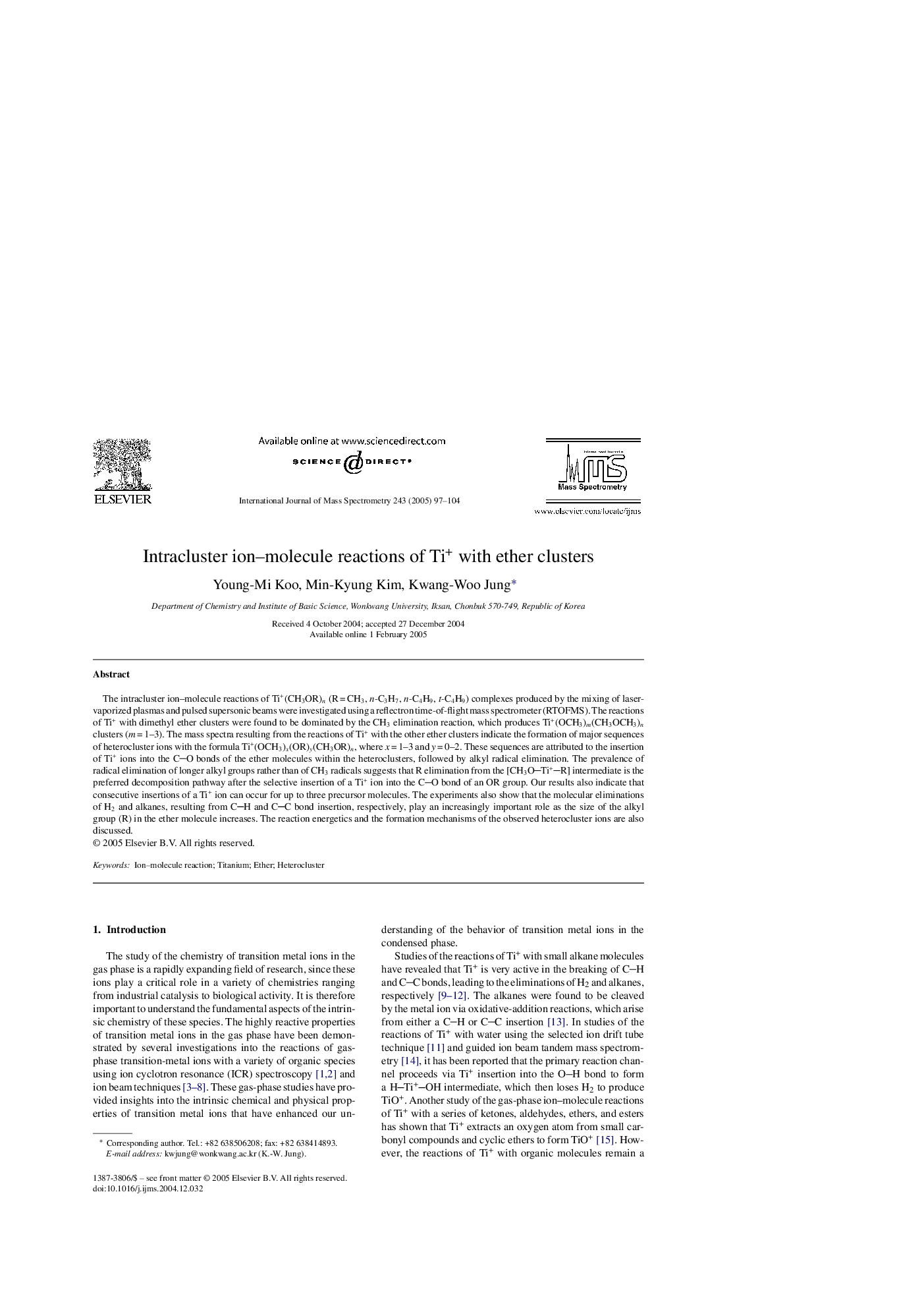| Article ID | Journal | Published Year | Pages | File Type |
|---|---|---|---|---|
| 9746680 | International Journal of Mass Spectrometry | 2005 | 8 Pages |
Abstract
The intracluster ion-molecule reactions of Ti+(CH3OR)n (R = CH3, n-C3H7, n-C4H9, t-C4H9) complexes produced by the mixing of laser-vaporized plasmas and pulsed supersonic beams were investigated using a reflectron time-of-flight mass spectrometer (RTOFMS). The reactions of Ti+ with dimethyl ether clusters were found to be dominated by the CH3 elimination reaction, which produces Ti+(OCH3)m(CH3OCH3)n clusters (m = 1-3). The mass spectra resulting from the reactions of Ti+ with the other ether clusters indicate the formation of major sequences of heterocluster ions with the formula Ti+(OCH3)x(OR)y(CH3OR)n, where x = 1-3 and y = 0-2. These sequences are attributed to the insertion of Ti+ ions into the CO bonds of the ether molecules within the heteroclusters, followed by alkyl radical elimination. The prevalence of radical elimination of longer alkyl groups rather than of CH3 radicals suggests that R elimination from the [CH3OTi+R] intermediate is the preferred decomposition pathway after the selective insertion of a Ti+ ion into the CO bond of an OR group. Our results also indicate that consecutive insertions of a Ti+ ion can occur for up to three precursor molecules. The experiments also show that the molecular eliminations of H2 and alkanes, resulting from CH and CC bond insertion, respectively, play an increasingly important role as the size of the alkyl group (R) in the ether molecule increases. The reaction energetics and the formation mechanisms of the observed heterocluster ions are also discussed.
Keywords
Related Topics
Physical Sciences and Engineering
Chemistry
Analytical Chemistry
Authors
Young-Mi Koo, Min-Kyung Kim, Kwang-Woo Jung,
